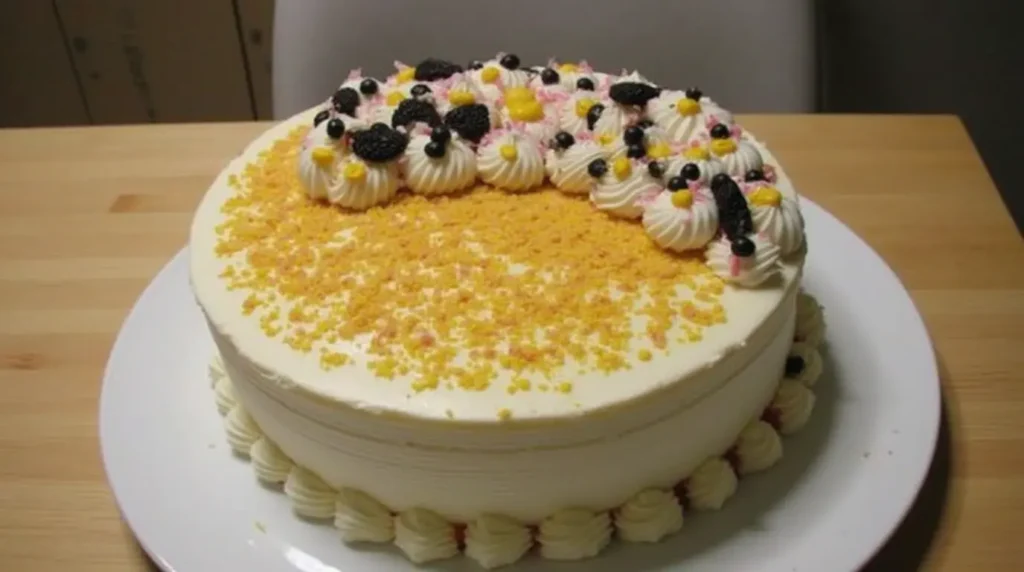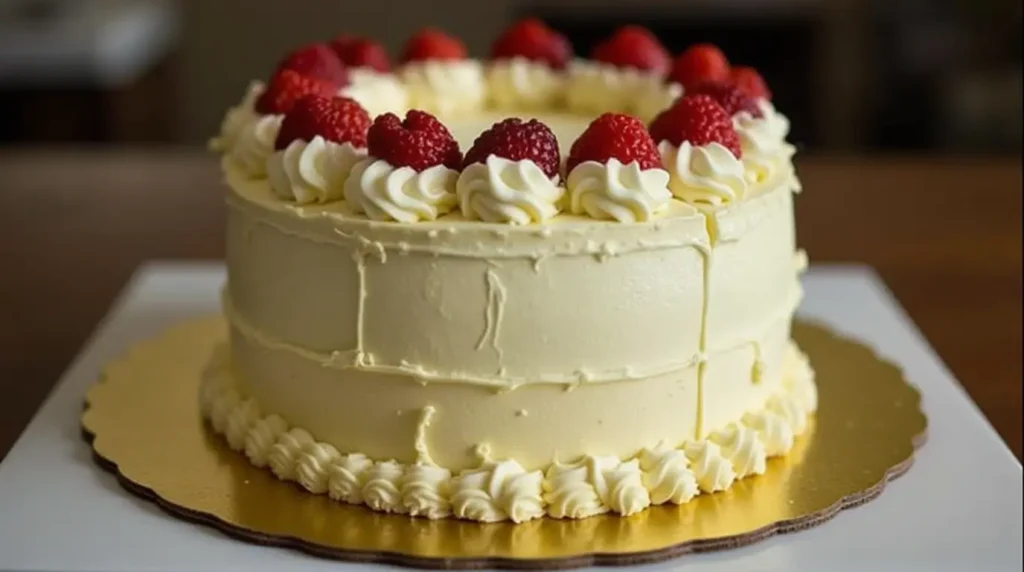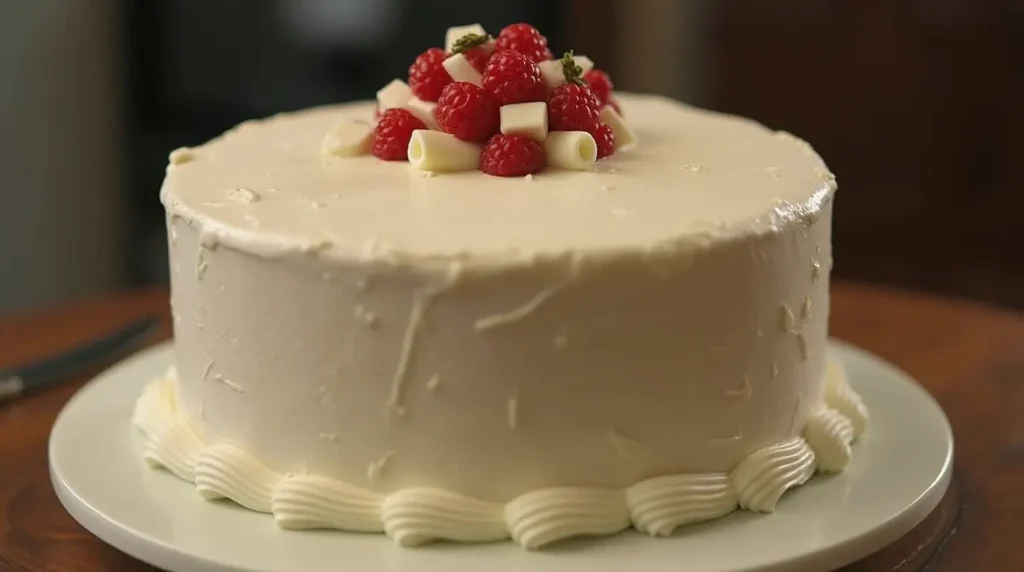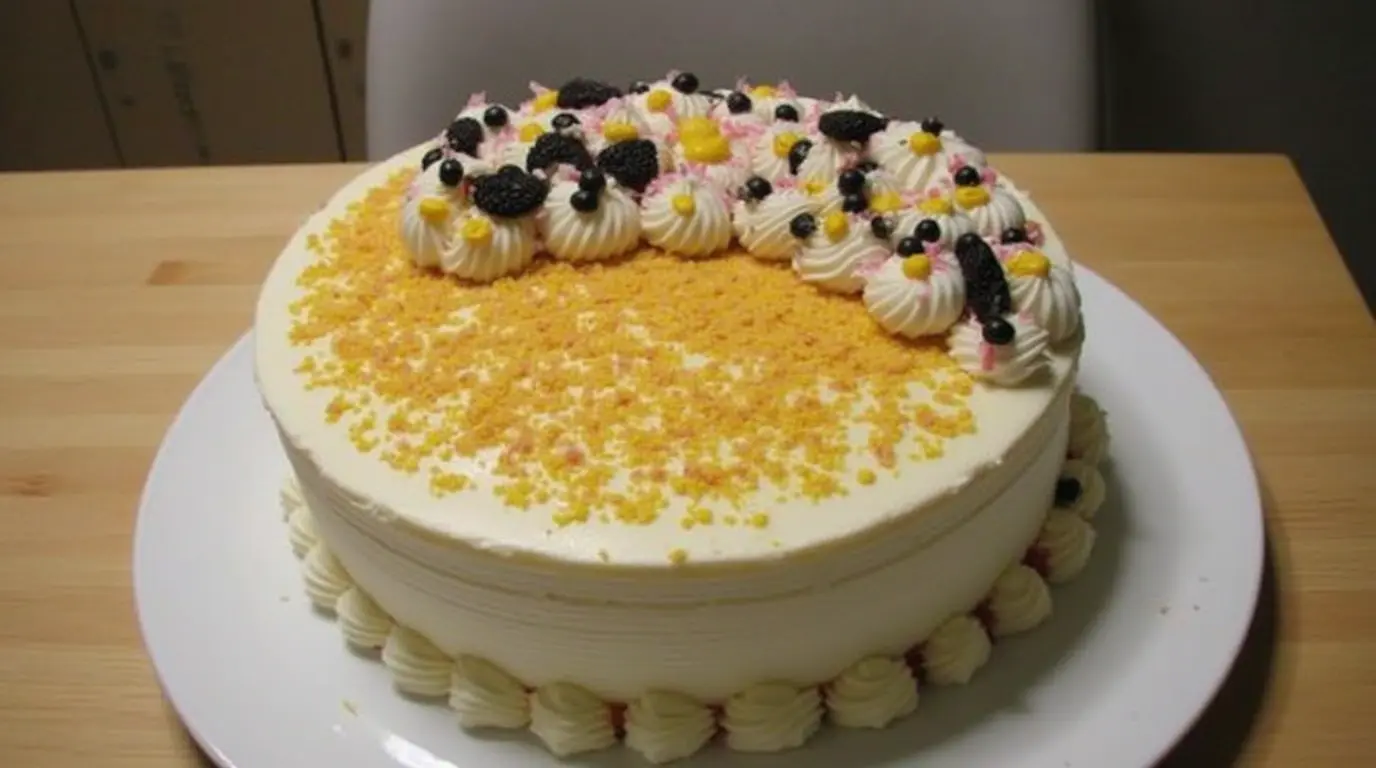The Magic of a Perfect Gordon Ramsay cake style
Have you ever watched Gordon Ramsay effortlessly whip up a cake and thought, “How does he make it look so easy?” His precision, attention to detail, and passion for high-quality ingredients make his desserts nothing short of perfection. If you’ve ever struggled with dry, dense, or uneven cakes, this guide will help you master Ramsay’s expert techniques to achieve a rich, moist, and beautifully textured cake every time.
Why Gordon Ramsay?
Gordon Ramsay is not just a celebrity chef—he’s a Michelin-starred culinary expert known for his perfectionist approach to cooking. When it comes to baking, Ramsay emphasizes:
- Using the best ingredients: Only high-quality butter, organic flour, and fresh eggs make the cut.
- Precision in technique: Every step, from mixing to baking, is done with care.
- Balancing flavors: Whether it’s a classic vanilla sponge or a rich chocolate cake, Ramsay ensures a perfect blend of sweetness, texture, and moisture.
A Personal Baking Journey
I still remember my first attempt at baking a cake—I followed a random recipe, mixed the ingredients, and hoped for the best. The result? A dry, crumbly disaster. But after studying Gordon Ramsay’s techniques, I finally understood what makes a cake truly exceptional. Now, I’m excited to share these secrets with you!
By the end of this guide, you’ll not only learn how to bake a cake Gordon Ramsay style, but you’ll also gain the confidence to experiment, refine your skills, and impress anyone who takes a bite. Ready to bake like a pro? Let’s get started! 🚀

Table of Contents
Gordon Ramsay’s Secret to the Perfect Cake
Gordon Ramsay is known for his no-nonsense approach to cooking, and his baking philosophy is no different. He believes that the key to a perfect cake lies in high-quality ingredients, precision techniques, and a deep understanding of flavors. Unlike store-bought cakes or rushed home-baking attempts, Ramsay’s cakes are rich, balanced, and have a professional touch that elevates them above the ordinary.
In this section, we’ll break down the fundamental principles that define a Gordon Ramsay cake style, from ingredient selection to expert techniques.
1. Quality Ingredients: The Foundation of Flavor
Ramsay always emphasizes that “A cake is only as good as its ingredients.” If you want to bake like a Michelin-starred chef, you need to start with the best:
- Butter: Always use unsalted, high-fat butter (at least 82% fat content). European-style butter gives a richer, creamier taste.
- Eggs: Fresh, organic, free-range eggs provide better structure and flavor. Ramsay prefers room-temperature eggs for a smoother batter.
- Flour: Instead of generic all-purpose flour, consider using cake flour for a softer texture. For gluten-free options, almond flour adds a delicate nutty flavor.
- Sugar: Fine caster sugar dissolves more easily into the batter, creating a smooth and airy cake.
- Chocolate & Cocoa: If making a chocolate cake, opt for at least 70% dark chocolate and unsweetened Dutch-process cocoa powder for deep, rich flavors.
- Vanilla & Flavoring: Pure Madagascar vanilla extract is a must. Artificial vanilla won’t do justice to your cake.
By using these high-quality ingredients, you’ll instantly notice an improvement in texture, moisture, and depth of flavor.
2. Mastering the Batter: Precision is Key
Ramsay often warns against overmixing the batter, which can lead to dense cakes. Here’s how to mix the batter like a pro:
✅ Whisk eggs and sugar thoroughly – This creates air pockets that give the cake a light, fluffy texture.
✅ Gently fold in dry ingredients – Overmixing flour develops too much gluten, resulting in a chewy cake.
✅ Melt chocolate and butter properly – For chocolate cakes, use a double boiler to melt chocolate slowly and prevent burning.
A great cake starts in the mixing bowl. Paying attention to technique will set you apart from an amateur baker.
3. The Science of Baking: Temperature and Timing
Ramsay insists that a cake should be treated like a soufflé—with care and attention. Even small changes in temperature or baking time can make a big difference.
- Preheat the Oven Properly: Always preheat to the exact temperature before placing your cake inside. Ramsay often bakes at 180°C (350°F) for a balanced rise.
- Use the Right Cake Tin: A springform pan lined with parchment paper ensures an even bake and easy release.
- Water Bath for Moisture: Some cakes, like flourless chocolate cake, benefit from a bain-marie (water bath) to prevent drying out.
Pro Tip: Rotate the cake pan halfway through baking to ensure even cooking!
4. The Perfect Finish: Decoration and Presentation
Gordon Ramsay believes that presentation is just as important as taste. His cakes are known for their elegant, restaurant-style look.
- Simple yet Elegant Garnishing: Fresh berries, a dusting of powdered sugar, or gold leaf can elevate the visual appeal.
- Layering for Professional Look: Instead of a single-layer cake, consider a layered cake with rich ganache or buttercream frosting.
- Plating Like a Michelin-Star Chef: Use a drizzle of caramel or raspberry coulis on the plate, then place the cake slice on top for a fine-dining effect.
“Make it look as good as it tastes,” Ramsay always says. By focusing on presentation, your homemade cake will have a professional touch.
5. Avoiding Common Baking Mistakes
Even experienced bakers make mistakes, but Ramsay has solutions for common cake-baking issues:
🚫 Dry Cake? – Add an extra egg or use buttermilk instead of regular milk.
🚫 Dense Texture? – Don’t overmix the batter; use cake flour instead of all-purpose flour.
🚫 Sunken Cake? – Avoid opening the oven too soon, as sudden temperature changes can cause collapse.
🚫 Burnt Edges, Raw Middle? – Your oven temperature may be too high. Try lowering it and baking for a bit longer.
By following Ramsay’s expert tips and tricks, you can perfect your cake-baking skills and impress everyone with a Michelin-worthy dessert.
Essential Ingredients for a Gordon Ramsay cake style
The foundation of a great cake lies in its ingredients. Gordon Ramsay is known for using only the best, freshest, and highest-quality ingredients to create cakes that are rich in flavor and perfect in texture. His philosophy? “If you start with great ingredients, you’re already halfway to making a great dish.”
In this section, we’ll break down the key ingredients that make a Gordon Ramsay cake style exceptional, explaining why each component is crucial and how to choose the best options.
1. The Best Butter for a Rich and Creamy Texture
Butter is the heart of any cake, providing moisture, richness, and flavor. Ramsay always insists on using high-fat, unsalted butter for superior taste and texture.
🔹 Why unsalted butter?
- Gives you full control over the cake’s salt content.
- Allows the true flavors of other ingredients to shine.
🔹 What to look for:
- European-style butter with at least 82% fat content (such as Kerrygold or Président).
- Fresh, pale yellow butter for a natural, clean flavor.
If you’re making a vegan version, Ramsay recommends using plant-based butter with a high-fat content for a similar texture.
2. Eggs: The Secret to Structure and Stability
Eggs play a vital role in the structure, moisture, and richness of a cake. Ramsay prefers organic, free-range eggs because they have:
- Brighter yolks, which enhance the cake’s color.
- A better protein balance, helping the cake rise properly.
- A richer flavor, making the cake more decadent.
Pro Tip: Always use room temperature eggs to ensure better emulsification and smoother mixing. Cold eggs can cause the batter to curdle!
3. The Right Flour: Choosing the Perfect Base
The type of flour you use determines the cake’s texture. Gordon Ramsay selects flour based on the type of cake he’s making:
🔹 Cake Flour (For Soft, Fluffy Cakes)
- Lower protein content (6-8%), which creates a lighter, airier texture.
- Perfect for sponge cakes, chiffon cakes, and delicate pastries.
🔹 All-Purpose Flour (For More Structure)
- Slightly higher protein (10-12%), giving more structure.
- Best for denser cakes like chocolate or pound cake.
🔹 Gluten-Free Alternatives (For Dietary Preferences)
- Almond flour for a slightly nutty, moist cake.
- Oat flour for a lighter texture with a subtle sweetness.
Pro Tip: Always sift the flour before using it to remove lumps and aerate it for a better rise.
4. Sugar: The Sweet Balancing Act
Sugar is more than just a sweetener—it affects the cake’s texture, moisture retention, and caramelization. Ramsay prefers:
🔹 Caster Sugar (Superfine Sugar)
- Dissolves faster, creating a smoother batter.
- Ideal for sponge cakes and light batters.
🔹 Brown Sugar (For Richer Flavor)
- Contains molasses, adding depth and moisture.
- Best for chocolate cakes, caramel cakes, and spiced cakes.
🔹 Alternative Sugars (For Healthier Options)
- Coconut sugar for a lower-glycemic sweetener with caramel notes.
- Honey or maple syrup for natural sweetness (adjust liquid content accordingly).
Pro Tip: If using honey or maple syrup, reduce other liquids in the recipe to maintain the right consistency.
5. Chocolate & Cocoa Powder: The Key to Decadence
For chocolate cakes, Ramsay never compromises on quality. He opts for:
🔹 Dark Chocolate (At Least 70% Cocoa Solids)
- Provides deep, intense chocolate flavor.
- Less sugar means a more balanced sweetness.
🔹 Dutch-Processed Cocoa Powder
- Has a smoother, less acidic taste than natural cocoa.
- Creates a darker, more luxurious cake.
🔹 Alternative Chocolate Options:
- Milk chocolate for a sweeter, milder taste.
- White chocolate for a creamy, buttery flavor.
Pro Tip: Always melt chocolate using a double boiler to prevent burning. If using cocoa powder, bloom it in hot water to enhance its flavor.
6. Baking Powder & Baking Soda: The Science of Rising
A cake’s rise depends on the right leavening agents. Ramsay carefully chooses between:
🔹 Baking Powder (For General Cakes)
- Already contains acid, making it easy to use.
- Best for vanilla cakes, butter cakes, and sponges.
🔹 Baking Soda (For Acidic Batters)
- Works when combined with acidic ingredients like buttermilk, yogurt, or lemon juice.
- Essential for chocolate cakes and banana bread.
Pro Tip: Always measure leavening agents precisely. Too much can make the cake collapse, while too little leads to a dense texture.
7. Vanilla Extract: Elevating the Flavor
Vanilla enhances the depth and balance of a cake. Ramsay insists on using:
✔ Pure Madagascar Vanilla Extract (not imitation vanilla!)
✔ Vanilla bean paste for an even richer, more aromatic flavor.
✔ Vanilla pods for premium cakes (scrape out the tiny black seeds for the best taste).
Pro Tip: If using vanilla pods, soak them in warm milk to extract maximum flavor.
8. Dairy: Enhancing Moisture and Texture
Dairy ingredients add richness and improve the overall structure of the cake. Some of Ramsay’s favorites include:
🔹 Whole Milk – Provides moisture and softens gluten.
🔹 Heavy Cream – Creates a richer, denser cake.
🔹 Buttermilk – Adds tanginess and helps cakes stay tender.
🔹 Yogurt or Sour Cream – Used in chocolate cakes for extra moisture.
Pro Tip: Replace regular milk with buttermilk or yogurt for a softer crumb and extra depth of flavor.
9. Salt: The Secret Ingredient for Balance
Although it’s often overlooked, a pinch of salt is essential in every cake. It:
✔ Enhances natural sweetness.
✔ Balances flavors.
✔ Strengthens the cake’s structure.
Pro Tip: Use fine sea salt instead of regular table salt for a cleaner taste.
Ingredient Summary Table
| Ingredient | Purpose | Best Choice |
|---|---|---|
| Butter | Adds richness & moisture | High-fat unsalted butter (82% fat) |
| Eggs | Provides structure & stability | Organic, free-range eggs |
| Flour | Determines cake texture | Cake flour for light cakes, AP flour for structured cakes |
| Sugar | Adds sweetness & texture | Caster sugar for smooth batters, brown sugar for moisture |
| Chocolate & Cocoa | Enhances depth of flavor | 70% dark chocolate, Dutch-processed cocoa |
| Baking Powder/Soda | Helps cake rise | Baking powder for general cakes, soda for acidic batters |
| Vanilla | Boosts flavor | Pure vanilla extract or vanilla bean paste |
| Dairy | Improves texture & moisture | Buttermilk, yogurt, or heavy cream |
| Salt | Balances sweetness | Fine sea salt |
By carefully selecting high-quality ingredients, you’ll be able to create a Gordon Ramsay cake style that is rich, moist, and full of flavor. Follow these ingredient guidelines, and your baking game will be transformed!
Ready to put these ingredients to use? Let’s move on to the step-by-step recipe! 🍰🎂

Step-by-Step Gordon Gordon Ramsay cake style Recipe
Now that we’ve covered the essential ingredients, it’s time to bring everything together and bake a Gordon Ramsay cake style. This step-by-step guide will walk you through the entire process—from preparation to final decoration—ensuring a moist, fluffy, and professional-quality cake.
📝 Recipe Overview
Before we begin, here’s a quick look at the cake we’ll be making:
- Cake Type: Classic Vanilla Sponge (with a rich buttercream option)
- Difficulty Level: Easy to Intermediate
- Prep Time: 20 minutes
- Baking Time: 25–30 minutes
- Cooling Time: 30 minutes
- Total Time: 1 hour 20 minutes
- Servings: 8–10
🛒 Ingredients: What You’ll Need
Below is a detailed ingredient list presented in a table format for easy reference.
Cake Ingredients
| Ingredient | Quantity | Purpose |
|---|---|---|
| Unsalted butter (room temp) | 200g (1 cup) | Adds richness and moisture |
| Caster sugar | 200g (1 cup) | Sweetens and aerates the batter |
| Eggs (room temp) | 4 large | Provides structure and stability |
| Pure vanilla extract | 2 tsp | Enhances flavor |
| Cake flour (sifted) | 200g (1 ¾ cups) | Ensures a light, fluffy texture |
| Baking powder | 2 tsp | Helps the cake rise |
| Whole milk (room temp) | 120ml (½ cup) | Adds moisture |
| Fine sea salt | ½ tsp | Balances flavors |
Buttercream Frosting (Optional)
| Ingredient | Quantity | Purpose |
|---|---|---|
| Unsalted butter (softened) | 250g (1 cup) | Base for the frosting |
| Icing sugar (sifted) | 500g (4 cups) | Sweetens and thickens frosting |
| Pure vanilla extract | 1 tsp | Adds flavor |
| Heavy cream | 2 tbsp | Creates a smooth consistency |
👨🍳 Step-by-Step Instructions
1️⃣ Step 1: Preheat and Prepare
🔹 Preheat your oven to 180°C (350°F).
🔹 Grease and line two 8-inch round cake pans with parchment paper.
🔹 Make sure all ingredients are at room temperature for even mixing.
Pro Tip: If you want extra-moist cake layers, use butter and flour to coat the pans instead of oil.
2️⃣ Step 2: Cream Butter and Sugar
🔹 In a stand mixer or large bowl, beat the butter and sugar together on medium-high speed (3–4 minutes) until light and fluffy.
🔹 This process aerates the mixture, making the cake soft.
Pro Tip: Scrape down the sides of the bowl to ensure even mixing.
3️⃣ Step 3: Add Eggs and Vanilla
🔹 Add the eggs one at a time, beating well after each addition.
🔹 Pour in the vanilla extract and mix until fully combined.
🚨 Avoid Overmixing! Overbeating at this stage can make the cake dense instead of fluffy.
4️⃣ Step 4: Mix Dry Ingredients Separately
🔹 In a separate bowl, sift together the cake flour, baking powder, and salt.
🔹 This ensures there are no lumps and creates an even texture in the cake.
Pro Tip: Sifting aerates the flour, which contributes to a lighter cake.
5️⃣ Step 5: Combine Wet and Dry Ingredients
🔹 Reduce mixer speed to low and gradually add the dry ingredients to the butter mixture.
🔹 Alternate with the milk—start and end with the flour mixture:
✅ 1/3 Flour → ½ Milk → 1/3 Flour → ½ Milk → 1/3 Flour
🚨 Do NOT overmix! Stop mixing as soon as everything is combined.
6️⃣ Step 6: Bake to Perfection
🔹 Divide the batter evenly between the prepared pans.
🔹 Smooth the tops with a spatula and tap the pans lightly on the counter to remove air bubbles.
🔹 Bake for 25–30 minutes or until a toothpick inserted in the center comes out clean.
⏳ Check at 25 minutes—overbaking will make the cake dry!
7️⃣ Step 7: Cool Before Frosting
🔹 Remove cakes from the oven and let them cool in the pans for 10 minutes.
🔹 Transfer to a wire rack and let them cool completely (about 30 minutes).
🚨 Never frost a warm cake! The frosting will melt and slide off.
🎂 Optional: Make the Buttercream Frosting
If you want to add a rich and creamy frosting, follow these steps:
1️⃣ In a bowl, beat butter until smooth and creamy (2 minutes).
2️⃣ Gradually add icing sugar, beating well after each addition.
3️⃣ Pour in vanilla extract and heavy cream, mixing until smooth and fluffy.
4️⃣ If needed, adjust consistency with more cream (for a softer frosting) or more sugar (for a thicker frosting).
🖌️ Step 8: Assemble and Decorate
✅ Place one cake layer on a plate and spread an even layer of frosting.
✅ Place the second cake layer on top and frost the entire cake.
✅ Use an offset spatula to create a smooth finish or piping tips for decorative designs.
✅ Garnish with fresh berries, edible flowers, or a dusting of powdered sugar.
🚀 Presentation Tip: For a professional touch, drizzle with caramel sauce or raspberry coulis before serving.

🎯 Pro Tips for Success
✔ Use Room Temperature Ingredients – Cold butter, eggs, or milk will result in an uneven batter.
✔ Measure Ingredients Precisely – Baking is science; small changes can affect the final result.
✔ Don’t Overmix the Batter – Stirring too much develops gluten, making the cake tough.
✔ Check Oven Temperature – Use an oven thermometer to ensure accuracy.
✔ Let the Cake Cool Fully – A warm cake will ruin the frosting texture.
❓ FAQs: Gordon Ramsay Cake Baking
Q1: Can I make this cake without an electric mixer?
Yes! You can use a whisk and hand power, but it will take longer. Make sure to cream the butter and sugar well for an airy texture.
Q2: What if my cake sinks in the middle?
This happens due to underbaking or opening the oven too soon. Always check with a toothpick before removing it from the oven.
Q3: How can I make this cake more moist?
Try adding an extra egg yolk or replacing milk with buttermilk for a richer texture.
Q4: Can I make this cake in advance?
Yes! Store it in an airtight container at room temperature for 1 day or refrigerate for up to 3 days.
Q5: What’s the best way to slice a cake cleanly?
Use a hot knife (run it under hot water and wipe dry) for perfect, smooth slices.
🍰 Final Thoughts
Baking a Gordon Ramsay cake style is all about precision, quality ingredients, and expert technique. Follow this step-by-step guide, and you’ll create a moist, flavorful, and beautifully textured cake that’s worthy of a Michelin-starred kitchen.
🔥 Now, it’s your turn! Try this recipe and impress your family and friends with a showstopping cake worthy of a professional bakery.
Expert Tips for a Michelin-Star Cake
Creating a cake that meets Michelin-star standards requires more than just following a recipe—it’s about precision, technique, and attention to detail. Gordon Ramsay and other top-tier chefs follow a set of professional baking principles to ensure that every cake they create is flawless, flavorful, and beautifully presented.
Below are expert tips to elevate your cake from homemade to restaurant-quality.
1️⃣ Use the Highest Quality Ingredients Possible
The best cakes start with the best ingredients. Michelin-star chefs insist on sourcing premium products to enhance both taste and texture.
✔ Key Ingredient Upgrades:
- Butter: Use European-style unsalted butter (82% fat) for extra richness.
- Flour: Opt for cake flour instead of all-purpose for a lighter crumb.
- Eggs: Always choose organic, free-range eggs for better flavor and structure.
- Sugar: Caster sugar (superfine sugar) dissolves better and creates a smoother batter.
- Chocolate: For chocolate cakes, use 70%+ cocoa dark chocolate for an intense, deep flavor.
- Vanilla: Use pure vanilla extract or Madagascar vanilla bean paste instead of artificial vanilla.
💡 Pro Tip: Always bring ingredients to room temperature before mixing. Cold ingredients can cause the batter to curdle, leading to a dense cake.
2️⃣ Master the Science of Cake Mixing
The way you mix your batter has a huge impact on the final texture.
✔ Key Mixing Techniques:
🔹 Creaming Method (For Airy Cakes)
- Beat butter and sugar together for 3–5 minutes until pale and fluffy.
- This process traps air, leading to a light and tender cake.
🔹 Folding Technique (For Delicate Cakes)
- When incorporating flour or whipped egg whites, use a gentle folding motion instead of stirring.
- This prevents deflating the batter, keeping the cake light and airy.
🔹 Avoid Overmixing!
- Overworking the batter develops gluten, making the cake tough.
- Mix until ingredients are just combined—no more!
💡 Pro Tip: Always sift dry ingredients to remove lumps and aerate the flour, ensuring a smoother batter.
3️⃣ Control Your Oven Temperature Like a Pro
An oven that’s too hot or too cool can make or break your cake.
✔ Key Oven Tips:
✔ Preheat properly – Always preheat for at least 15–20 minutes before baking.
✔ Use an oven thermometer – Many home ovens aren’t accurate, so check the real temperature.
✔ Rotate halfway through – This ensures even baking without overbrowning.
✔ Bake in the center rack – Avoid placing the cake too high or too low, which can cause uneven cooking.
💡 Pro Tip: If your cake domes too much, the oven is too hot. Reduce the temperature by 10°C (20°F) and bake slightly longer.
4️⃣ Achieve the Perfect Cake Texture
The key to a Michelin-star cake is getting the texture just right—not too dry, not too dense, but perfectly moist and fluffy.
✔ Texture-Enhancing Tricks:
✔ Use buttermilk or yogurt – Adds moisture and a slight tang, making cakes extra tender.
✔ Add an extra egg yolk – This boosts richness and creates a smoother crumb.
✔ Replace some butter with oil – A small amount of vegetable oil (like 2 tbsp) helps cakes stay soft for longer.
✔ Let the batter rest – Allowing it to sit for 10 minutes before baking helps develop a more even crumb.
💡 Pro Tip: If making a chocolate cake, bloom the cocoa powder in hot water first—this intensifies the chocolate flavor.
5️⃣ Use the Right Cake Pans for an Even Bake
Your cake pan choice affects baking time, texture, and overall presentation.
✔ Best Cake Pan Practices:
✔ Use light-colored metal pans – Dark pans absorb more heat, causing overbaking on the edges.
✔ Grease AND line with parchment paper – Ensures easy removal and prevents sticking.
✔ Even batter distribution – Use a kitchen scale to divide the batter evenly between pans.
💡 Pro Tip: Wrap cake pans with moist cake strips (or damp towels) to prevent doming and ensure flat, even layers.
6️⃣ Master the Cooling and Frosting Process
A Michelin-star cake isn’t just about the baking—it’s about the final presentation.
✔ Key Cooling & Frosting Tips:
✔ Cool completely before frosting – Otherwise, the frosting will melt and slide off.
✔ Trim uneven layers – Use a serrated knife to level off the cake for a professional look.
✔ Apply a crumb coat – This thin layer of frosting locks in crumbs for a smooth final layer.
✔ Chill before final frosting – Cooling the crumb coat for 15 minutes helps achieve a cleaner finish.
💡 Pro Tip: Use an offset spatula for smooth application and a bench scraper for a perfectly sleek finish.
7️⃣ Elevate the Presentation Like a Michelin-Star Chef
A beautifully decorated cake is just as important as its taste.
✔ Pro Cake Decorating Tips:
✔ Use a turntable – This makes frosting and decorating easier and more precise.
✔ Experiment with textures – Try piping, spatula strokes, or edible gold leaf for a luxury look.
✔ Garnish with purpose – Fresh berries, edible flowers, and a dusting of powdered sugar add elegance.
✔ For chocolate cakes, use chocolate curls or tempered chocolate decorations.
💡 Pro Tip: Lightly torch the cake’s surface (with a culinary torch) for a glossy, professional finish.
8️⃣ Store and Serve Like a Pro
Even after baking, proper storage and serving techniques preserve freshness and enhance flavor.
✔ Best Storage Practices:
✔ Room Temperature (1 day max) – Store in an airtight container.
✔ Refrigeration (up to 5 days) – Wrap tightly in plastic wrap to prevent drying out.
✔ Freezing (up to 3 months) – Wrap in plastic and foil; thaw at room temperature before serving.
💡 Pro Tip: Always bring chilled cake to room temperature before serving—it enhances the flavors and texture.
🚀 Final Thoughts: Perfecting the Art of Cake Baking
Baking a Michelin-star cake requires precision, patience, and passion. By following these expert tips, you can take your cakes from simple home bakes to showstopping masterpieces worthy of a five-star restaurant.
FAQs About Making a Gordon Ramsay cake style
What makes Gordon Ramsay’s cakes different from regular cakes?
Ramsay focuses on high-quality ingredients, precise techniques, and elegant presentation.
Can I substitute ingredients in this recipe?
Yes, but it may alter the texture and flavor. Use Ramsay’s recommended alternatives for the best results.
How can I make this cake even more special?
Try adding a caramel drizzle or pairing it with homemade ice cream for an elevated dessert experience.
Conclusion: Master the Gordon Ramsay cake style Method Today
Baking a cake in Gordon Ramsay’s signature style isn’t just about following a recipe—it’s about embracing the art and science of professional baking. From selecting the finest ingredients to mastering the right techniques, every step plays a crucial role in achieving a Michelin-star-worthy cake.
By now, you’ve learned:
✔ The secrets behind Gordon Ramsay’s cake philosophy – Quality ingredients, expert precision, and perfect execution.
✔ Essential baking techniques – The importance of proper mixing, accurate oven temperature, and texture control.
✔ Pro-level presentation and decorating tips – How to elevate your cake’s look and make it truly Instagram-worthy.
✔ Common cake-baking mistakes and solutions – Ensuring your cake is moist, fluffy, and perfectly baked every time.
🚀 Take Your Baking Skills to the Next Level
Now that you have all the expert knowledge and insider tips, it’s time to put them into practice! Follow the step-by-step recipe, incorporate the pro techniques, and most importantly—have fun baking.
✔ Try this recipe today and see how your baking skills improve!
✔ Experiment with flavors and decorations to make it your own.
✔ Share your results! Tag your cake creations on social media and show off your masterpiece.
💡 Pro Challenge: Want to take it up a notch? Try adapting this recipe with a seasonal twist—add a hint of citrus, swap in a rich ganache, or experiment with different textures!
📢 What’s Next? Join the Baking Community!
Baking is a journey, and there’s always more to learn. Stay connected with other food enthusiasts:
📌 Follow us on social media for more expert baking tips and new recipes.
📌 Sign up for our newsletter to get exclusive Gordon Ramsay-style recipes straight to your inbox.
📌 Have questions or need advice? Drop a comment below—we’d love to hear from you!
🎂 Now go forth and bake! Your perfect Gordon Ramsay cake style awaits. Happy baking! 🥂✨


1 thought on “How To Make A Gordon Ramsay cake style Perfect”